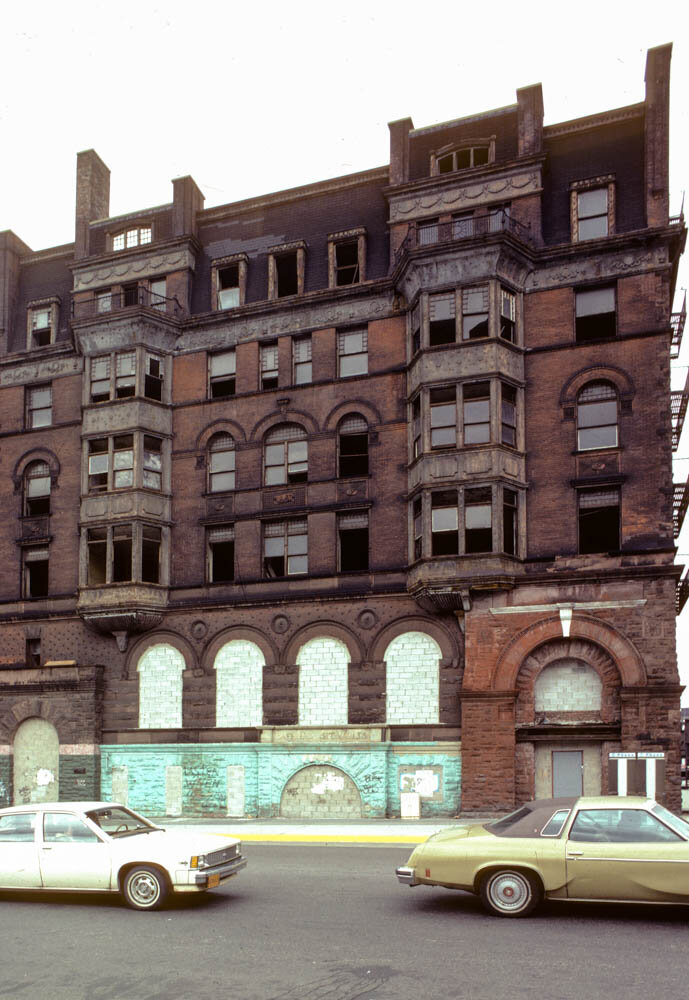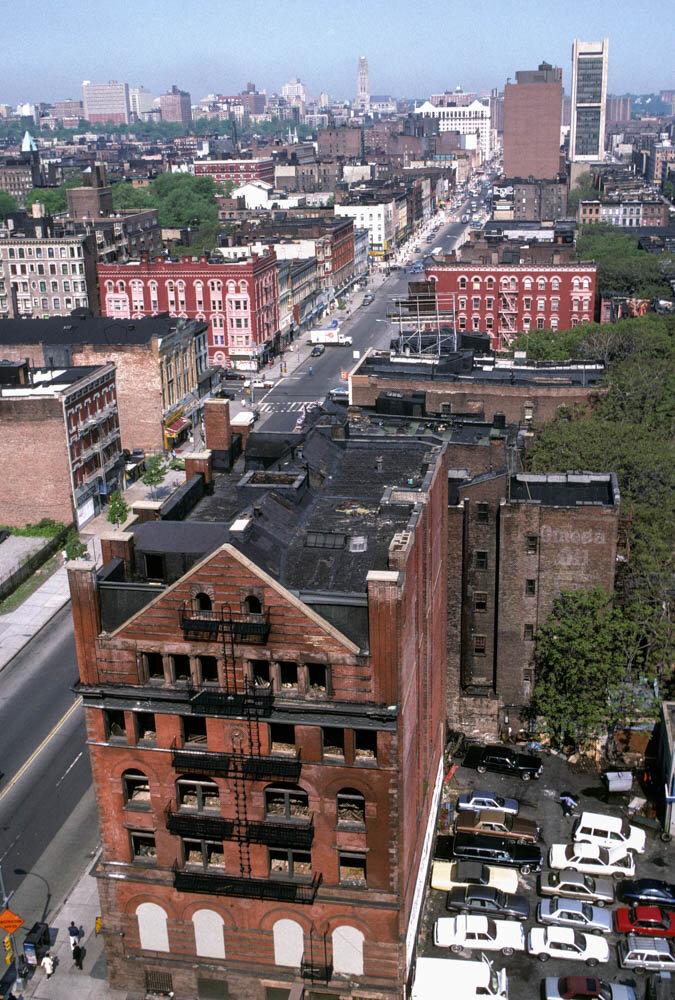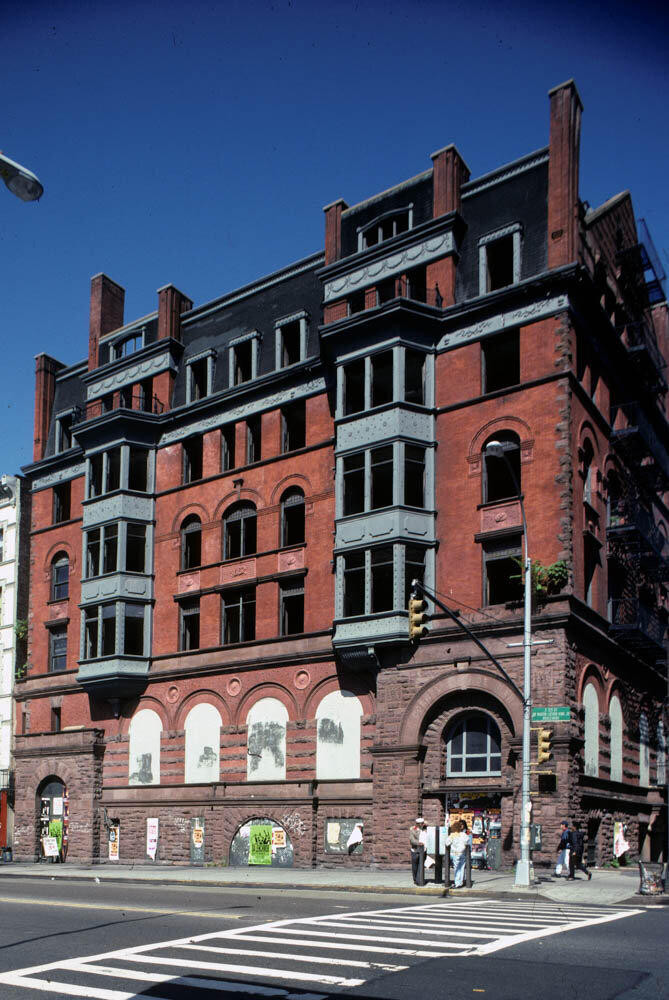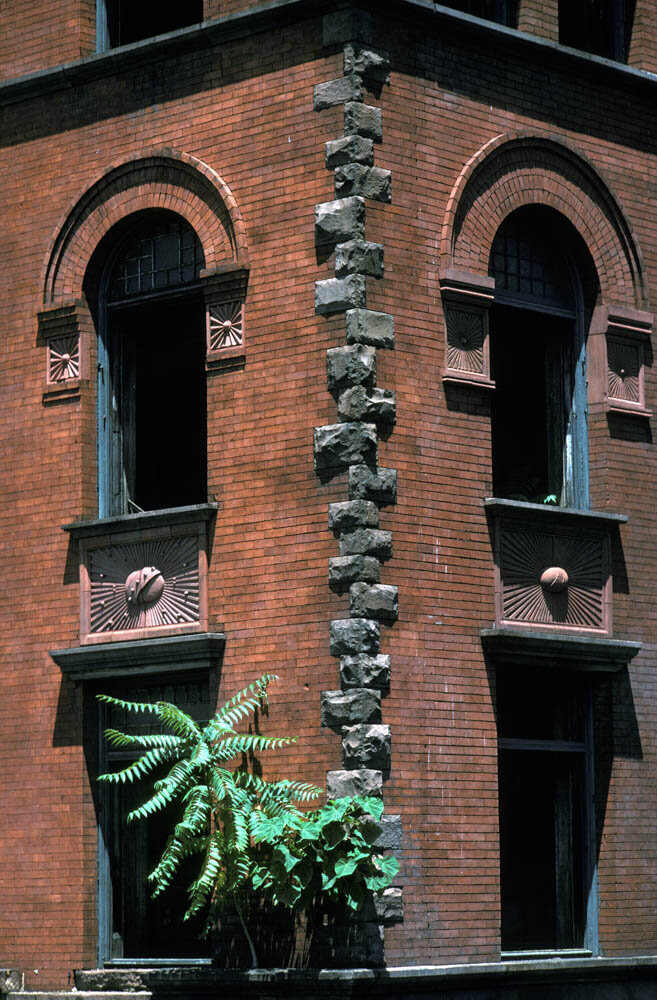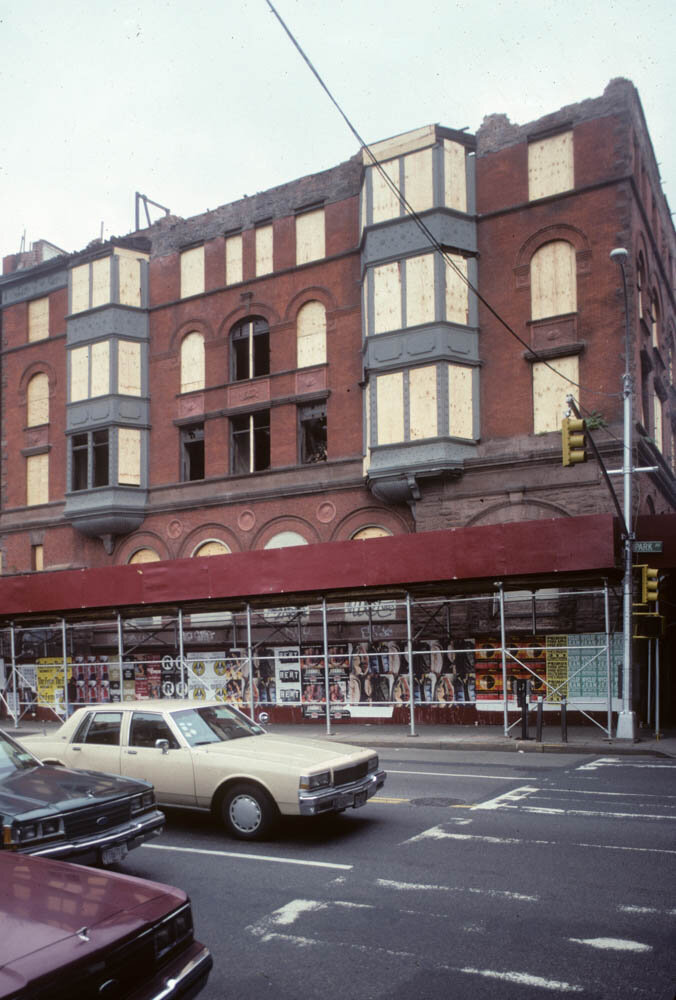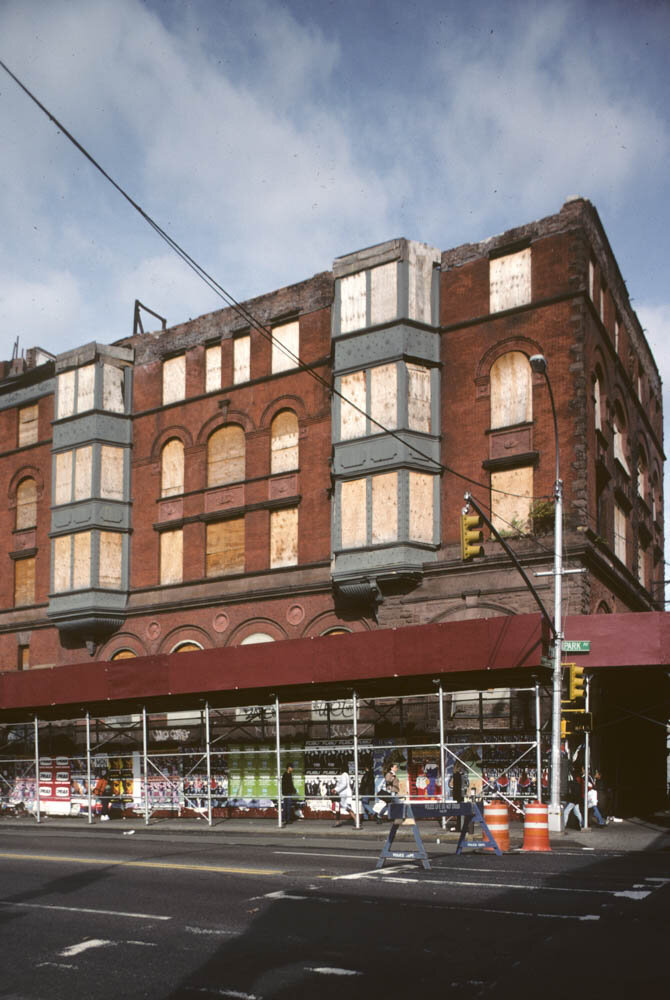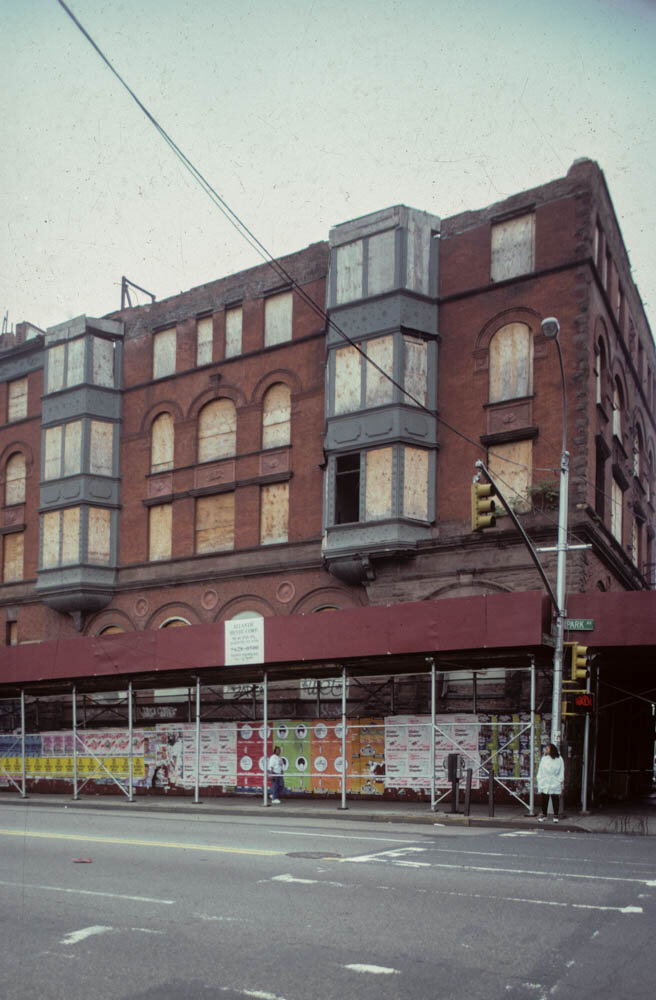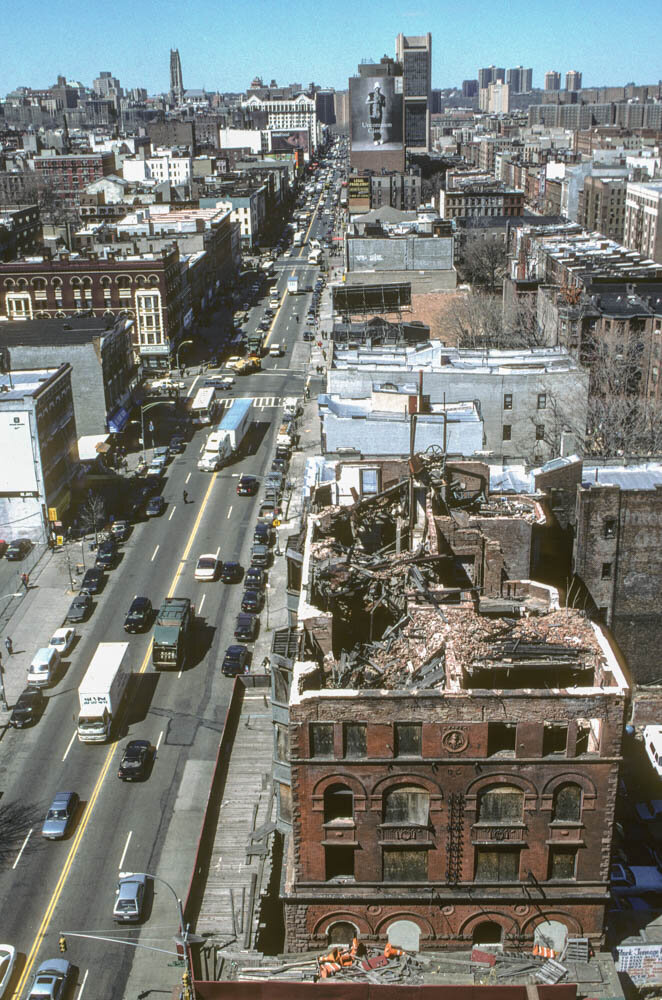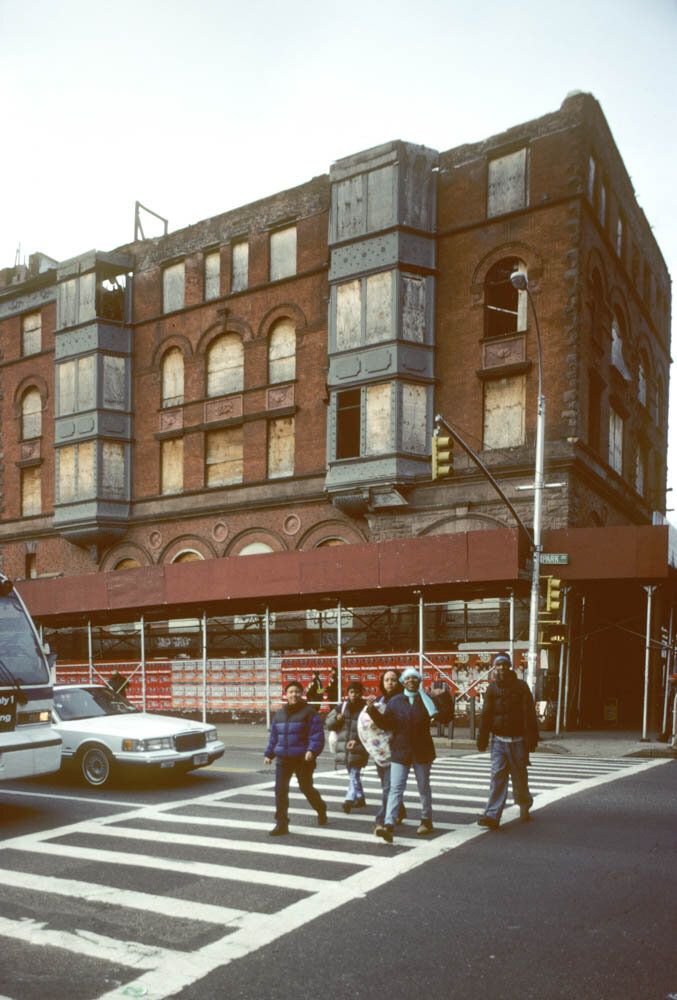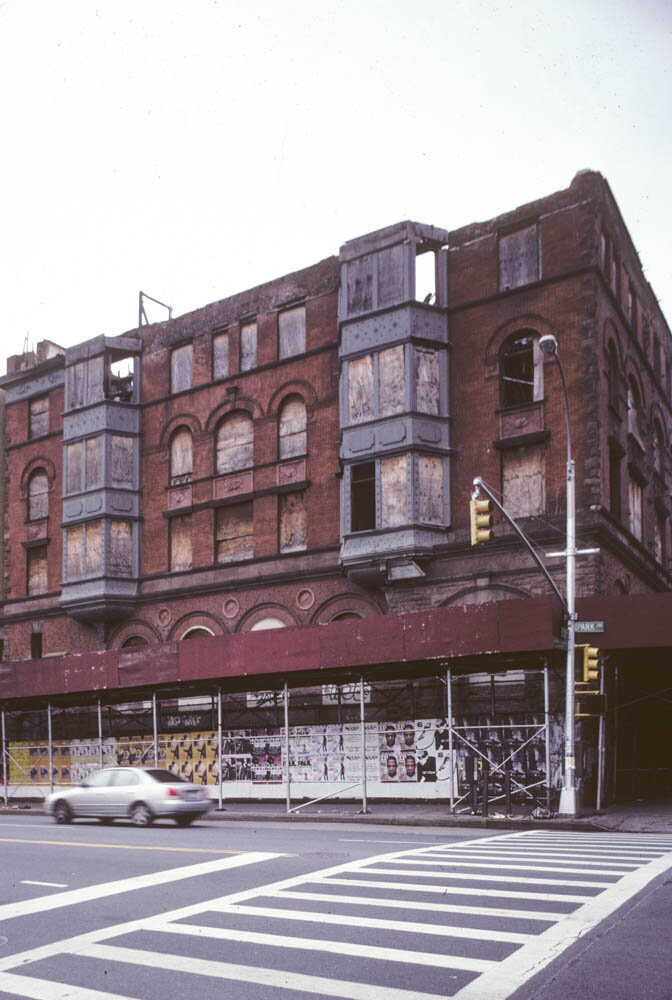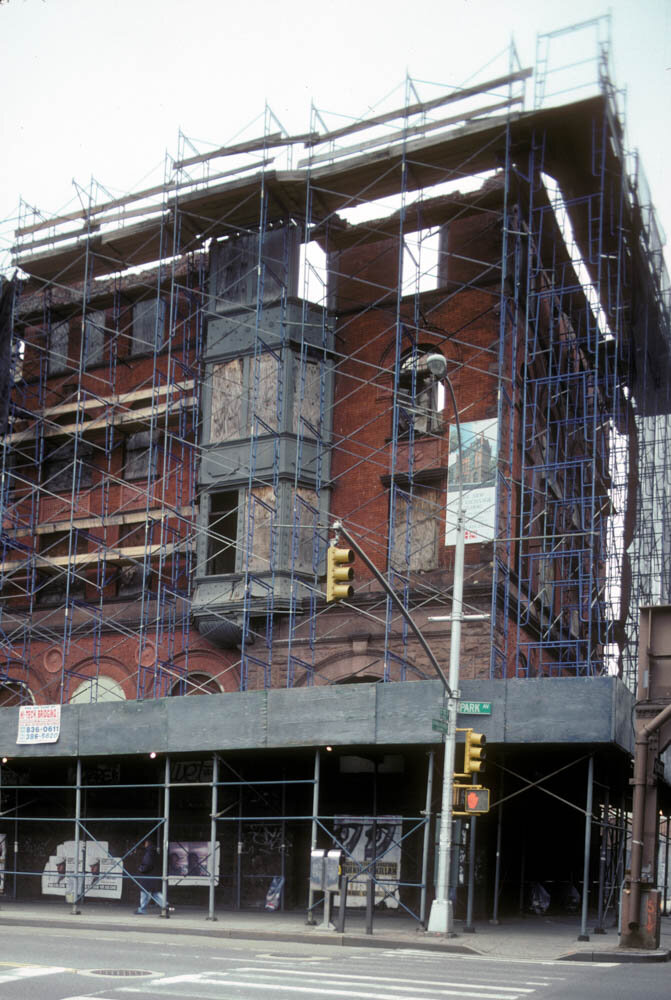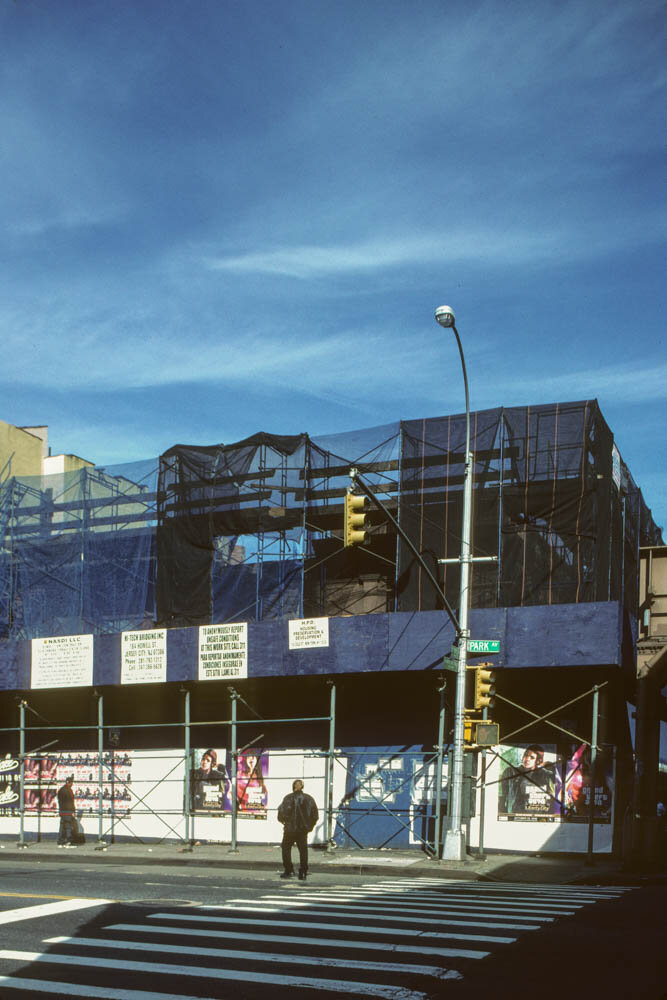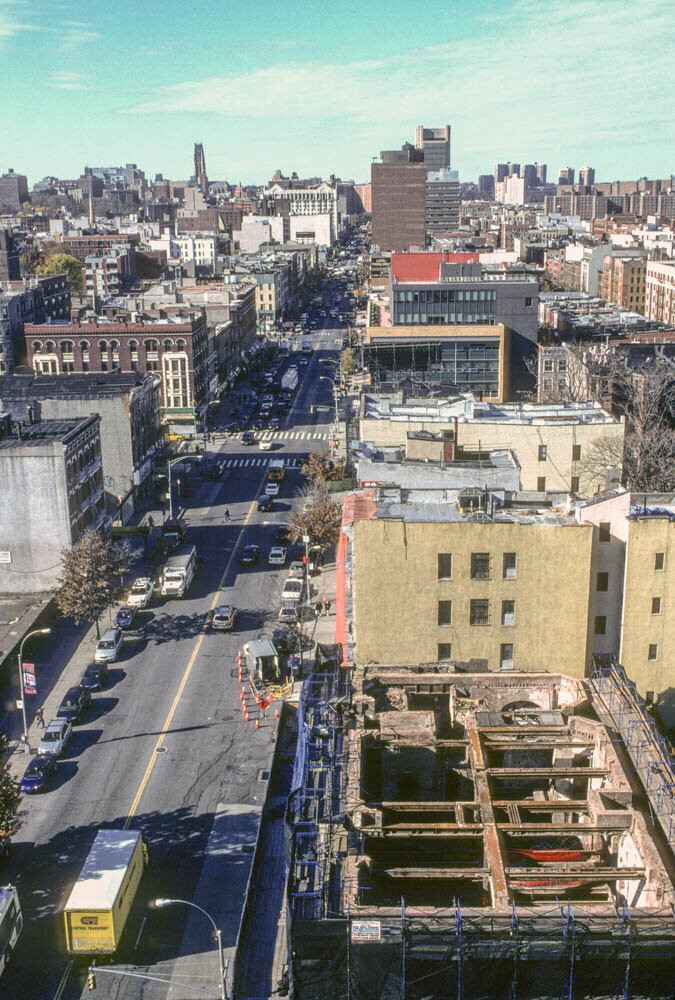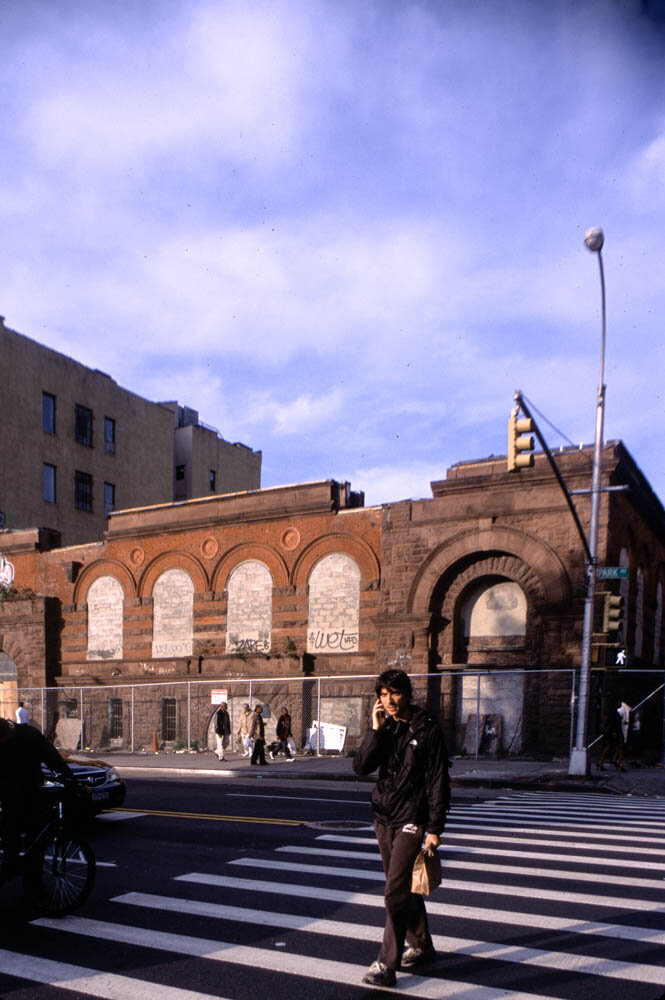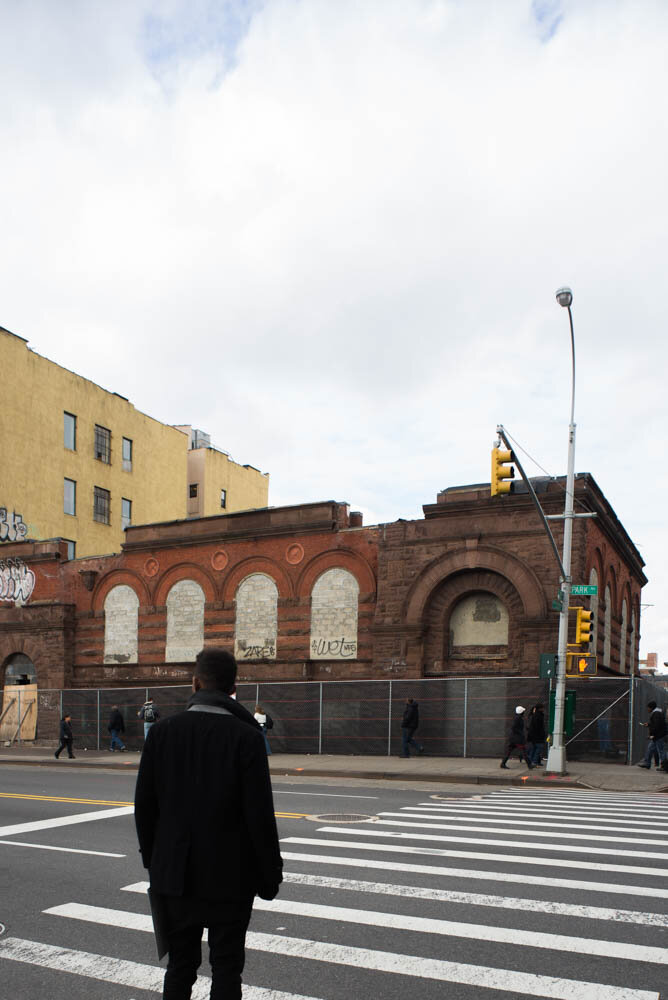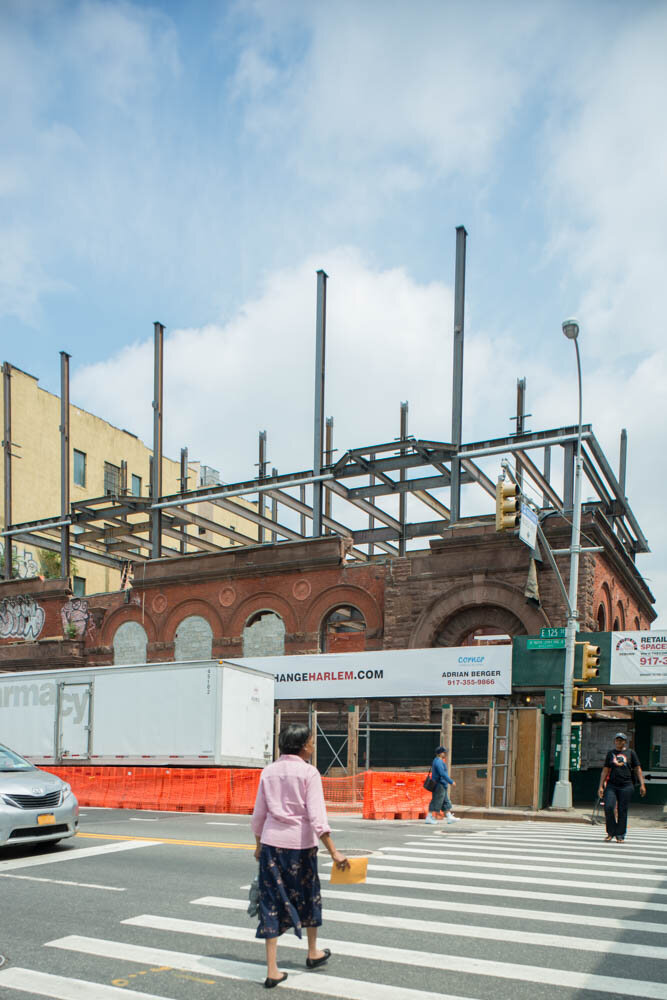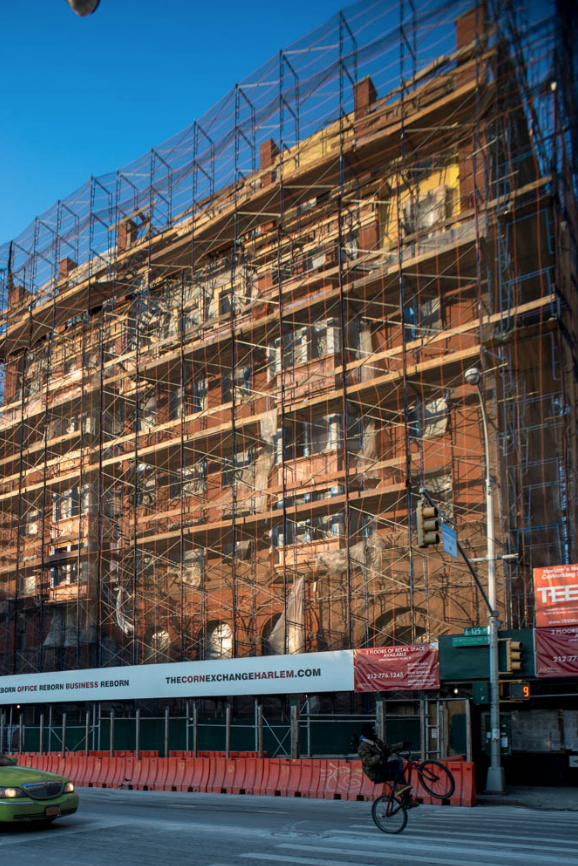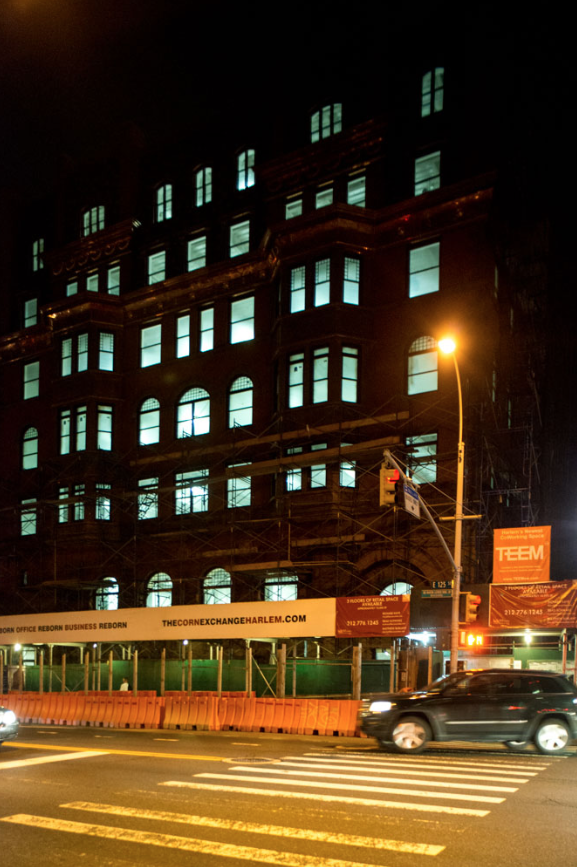Camilo Jose Vergara: Tracking Time
Photographic Survey - Harlem, New York
Since the nineteen seventies the Chilean-born, New York-based photographer Camilo Jose Vergara has been documenting the metamorphoses of American cities and the changing times their communities have lived through. One way in which Vergara has used the tool of photography is to systematically document the changes specific sites and buildings have undergone, returning to them again and again. Here we present the story of one particular building documented by Vergara since the early eighties; the former Corn Exchange Bank on the corner of 125th Street and Park Avenue in New York’s Harlem.
Before the rebuilding of Harlem began in earnest Vergara wrote in his 1999 book American Ruins:
“For more than four decades I have devoted myself to photographing and documenting the poorest and most segregated communities in urban America. I feel that a people’s past, including their accomplishments, aspirations and failures, are reflected less in the faces of those who live in these neighborhoods than in the material, built environment in which they move and modify over time. Photography for me is a tool for continuously asking questions, for understanding the spirit of a place, and, as I have discovered over time, for loving and appreciating cities.”
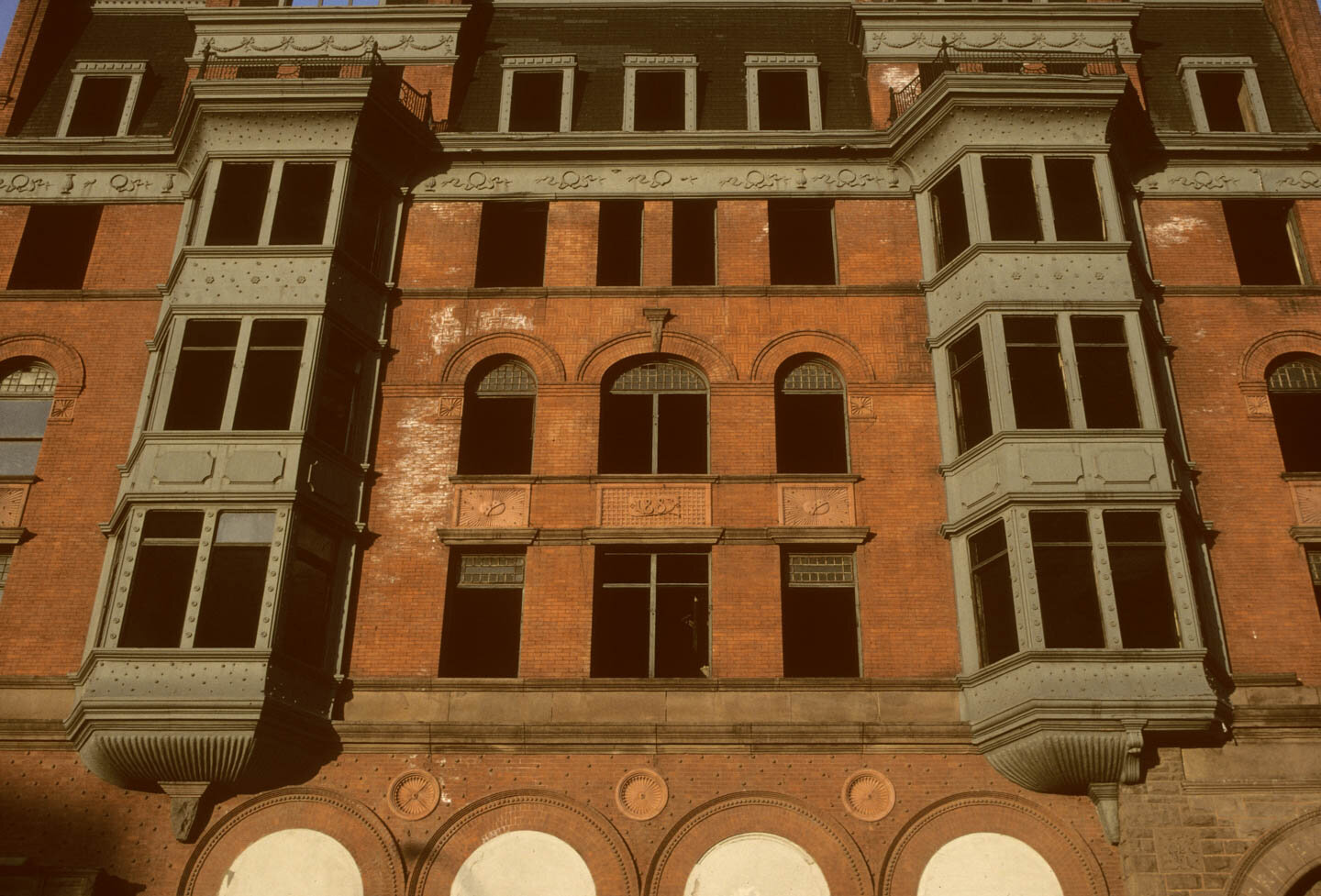
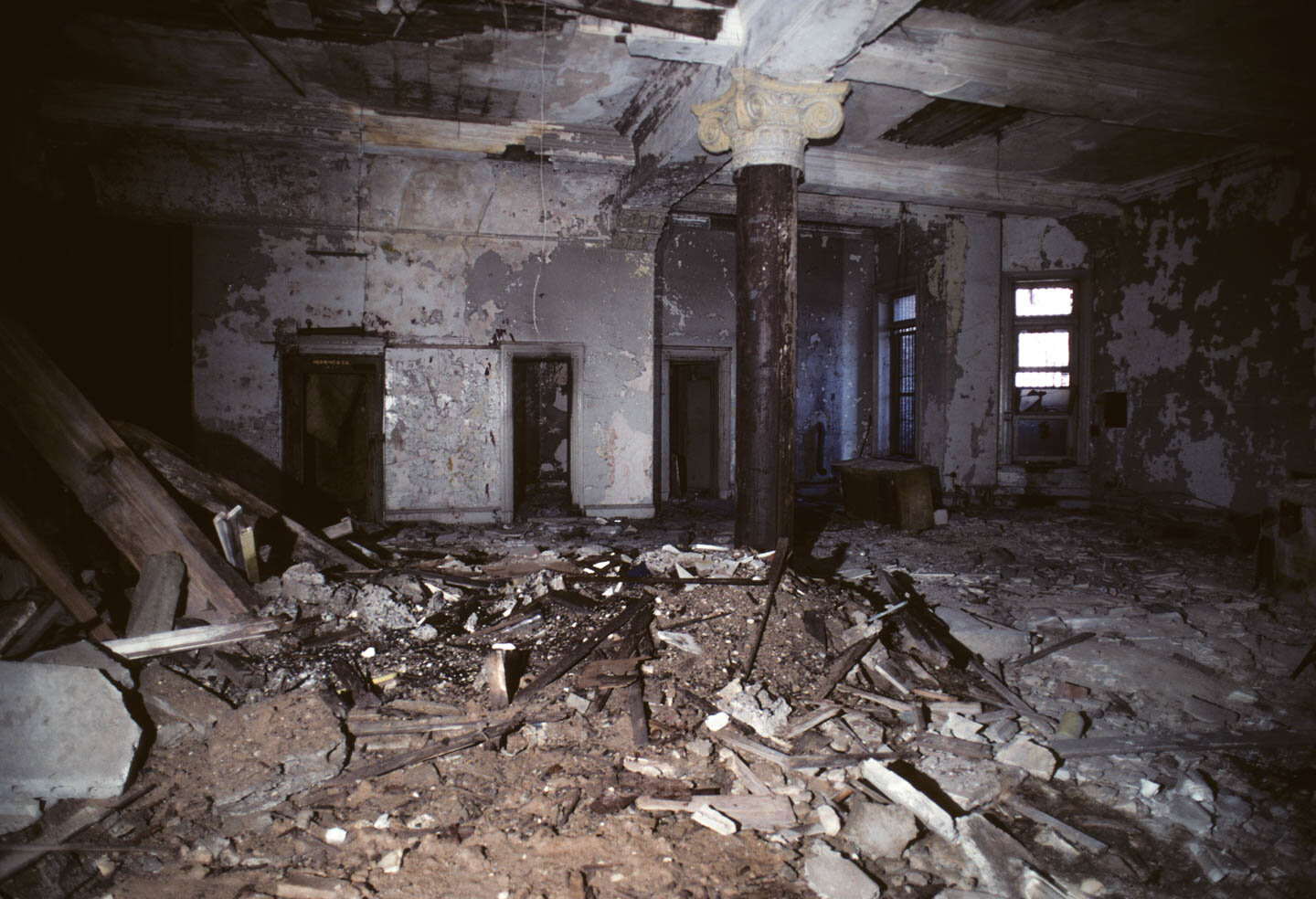
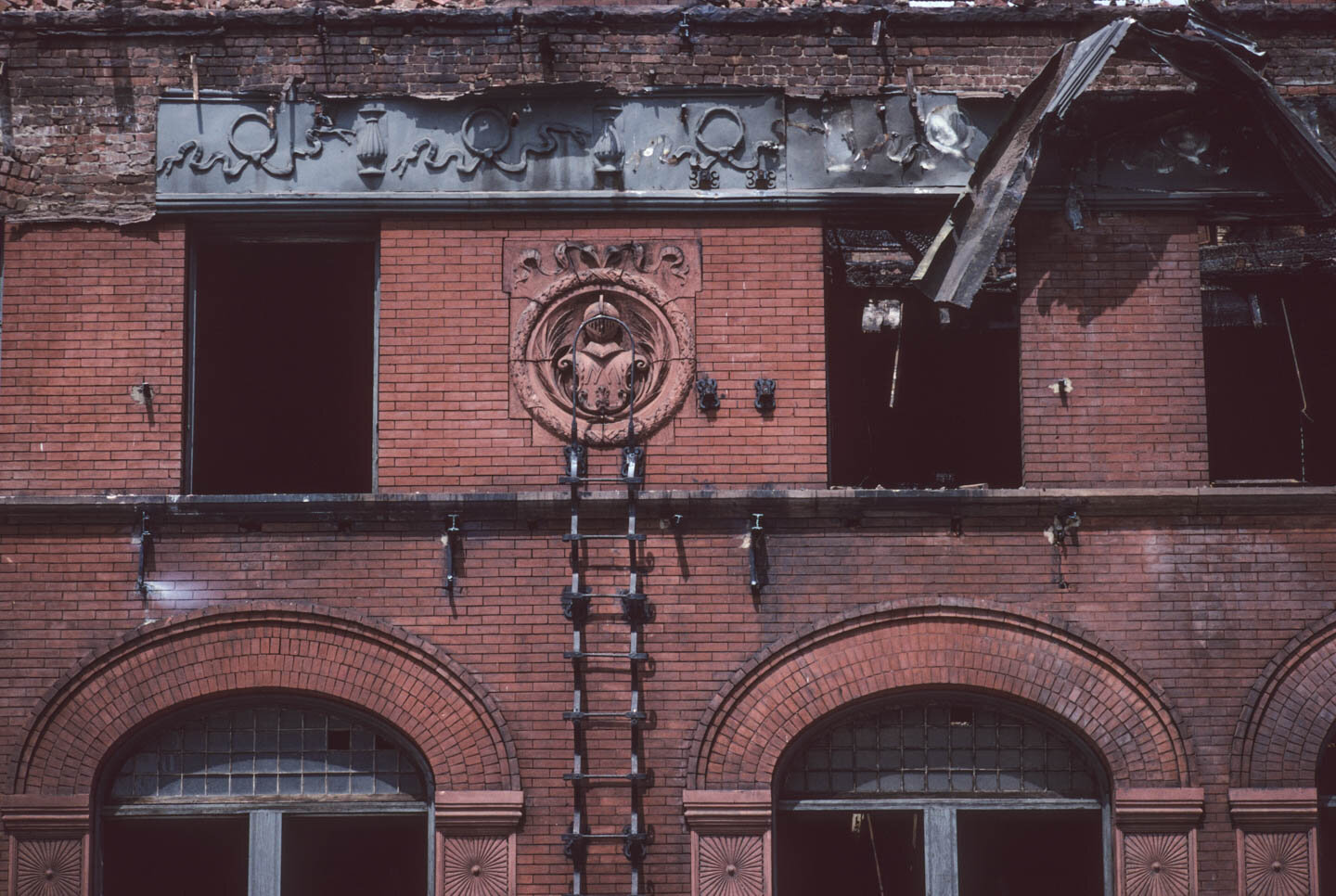
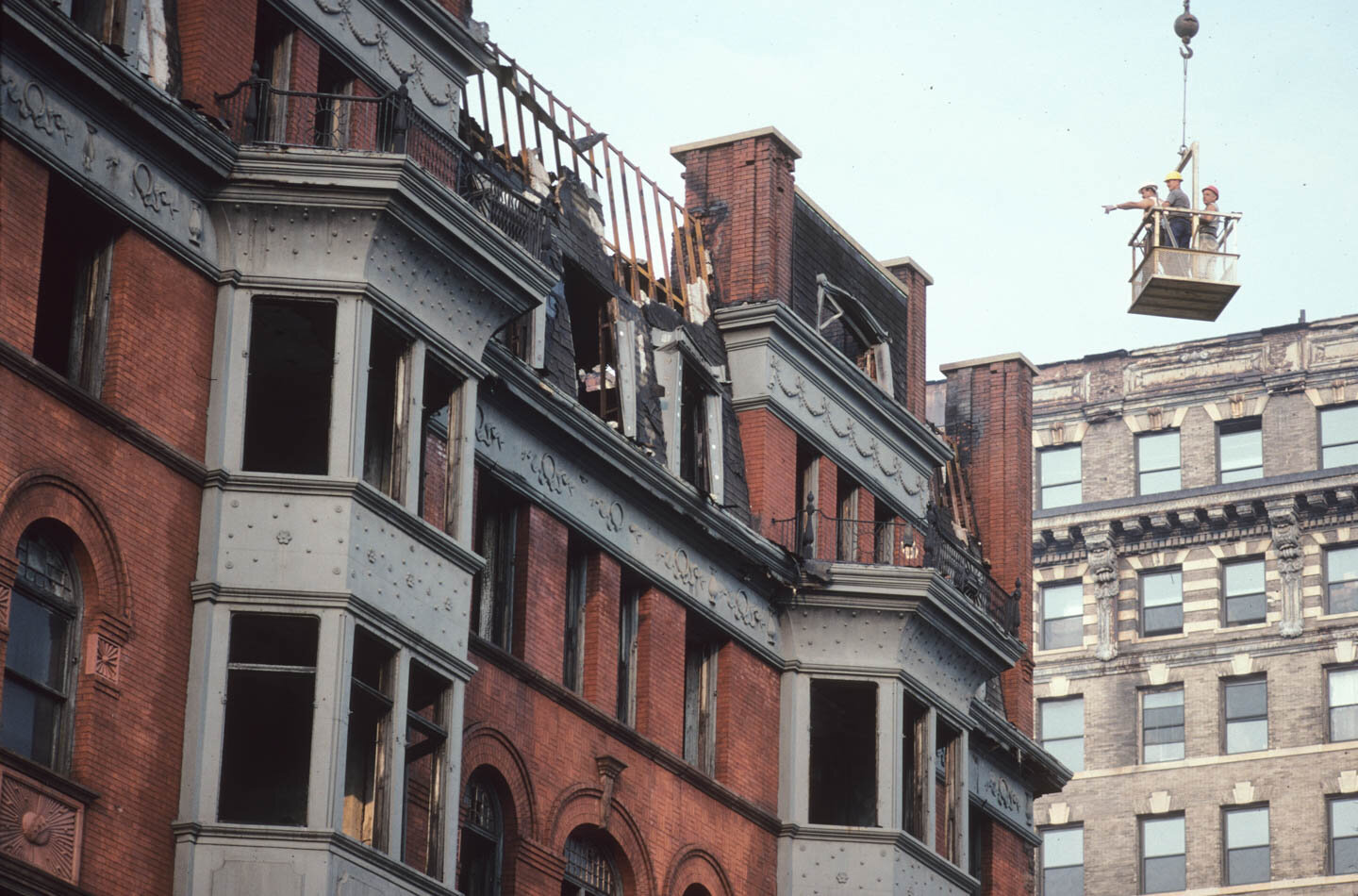

CJB Until 1997, the former Corn Exchange Bank stood out from a distance. It was taller and more massive than anything else on its Harlem block. In this part of Harlem there are few red-brick buildings, and even fewer are as richly decorated.
Designed in 1883 as Mount Morris Bank by Lamb and Rich Architects, the building was distinguished by its Romanesque revival-style base and the eclectic Queen Anne style above its second story. It became the Corn Exchange Bank in 1913 and was declared a landmark of New York in 1993, after standing vacant for more than two decades. There were many plans to rehabilitate the building as a community institution, but because of lack of funding they were never implemented. Then, in 1997, the building lost two floors to a fire. Now, with its first two floors hidden by scaffolding and its top missing, the once beautiful edifice is a grotesque sight.
In the early 1990s I came across a film crew making the movie Malcolm X on the corner of 125th Street and Park Avenue. The intersection had been transformed for the filming; they had replaced the street lights and signs, and period cars were parked in front. The bank’s main entrance appeared to be in use. Afterward, the entrance was resealed, but a transom window above the door remained as Hollywood’s contribution to the building’s restoration.
I never slept inside this Harlem building. I never ate a meal there. Still, I have had a personal relationship with it for half of my life. It is near my home. I felt comfortable going there, and I often used the lobby as a setting for portraits and interviews. I thought that in choosing this setting I would not need to explain what I meant by ruins.
It was necessary to squeeze in through a bent metal door and climb a broken stairway to reach the big hall. the ceiling caved in long ago, and a heavy wooden beam used thong from it, one of its ends touching the floor, the other threatening to fall at any moment. A classical cast-iron column rusted in the middle of the room. An open safe contained political pamphlets left over from the Abraham Beame mayoral campaign - the building served as its Harlem headquarters. On the floor were strewn a jacket, a rubber boot, a book in Arabic, and several bottles and cups, all covered with a thick coat of plaster and dust. The stairs were cinderblocked, barring access to the French apartments upstairs. Nor could I climb to the roof or look out on 125th Street from one of the small wrought-iron balconies decorated with sunbursts.
The Corn Exchange Bank was rehabilitated in 2015 and since then it has remained largely empty. Because of its concentration of homeless shelters, drug treatment and dialysis centers and its excellent transportation facilities, the neighborhood attracts the homeless, drug addicts and the poor as well as the middle class. In the same block new buildings have been completed and nearby others are being built including a large apartment building by celebrity architect Bjarke Ingels. At night, in the middle of a building boom, the dramatic Corn Exchange Bank is in darkness.
NOTES
A guide to Camilo Jose Vergara’s astonishing body of work can been seen on the U.S. Library of Congress website here. There’s also further information available via his website camilojosevergera.com and also at www.museumofthestret.org.
Images © Camilo Jose Vergara
Article published 12th February 2020

